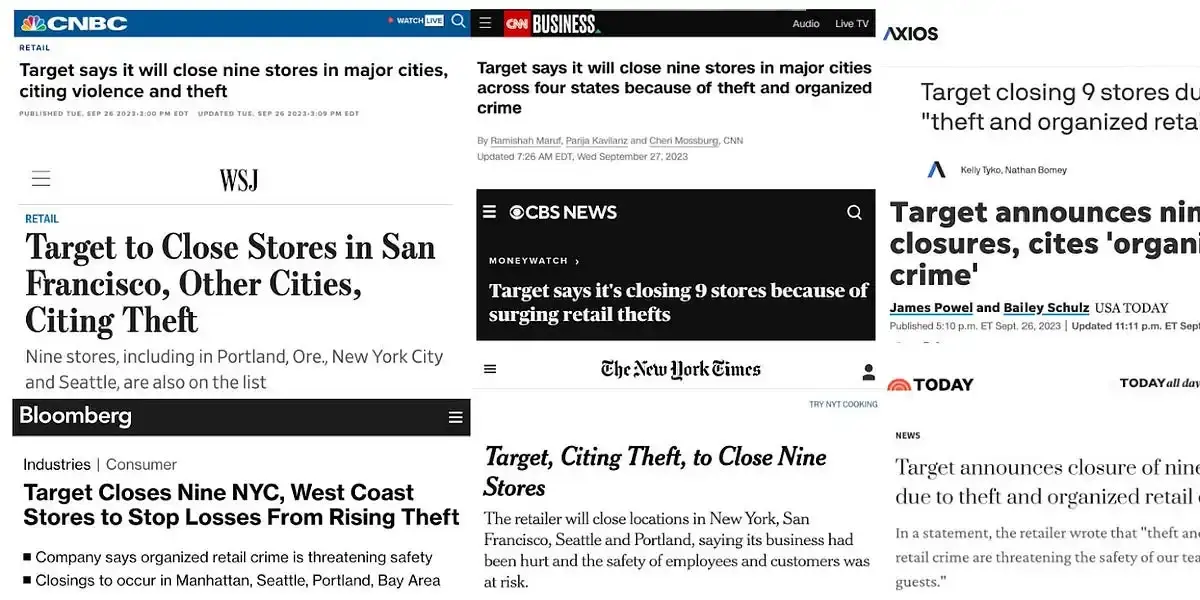Popular Information analyzed publicly available crime data for the stores Target is closing in New York and San Francisco. This data reveals that stores that are being closed have lower levels of theft than nearby stores that have remained open. An analysis of the stores Target is shuttering in the Seattle area follows a similar pattern. This data suggests that factors other than crime are driving Target’s decisions.
In June, Target CEO Brian Cornell said the company was saddled with large quantities of unwanted merchandise that it was forced to deeply discount, cutting into profit margins. Moreover, Target’s stores include “many fun and impulse-driven items,” but that merchandising mix “has become a liability as consumers focus on needs rather than wants and put discretionary dollars toward vacations and concerts,” CNBC reported in August. Groceries only account for 20% of Target’s sales, compared to 50% at competitors like Walmart.



I mean I literally mentioned that in my comment? It’s not necessarily about the shrinkage but it’s about where the shrinkage is located that could be a problem since we don’t have that data as it’s not published you cannot make that statement that it hasn’t impacted them and the lack of adequate comparison of size of the locations to other locations in the area doesn’t really make sense.
They don’t tell you how much smaller they are relatively so you can’t get an estimate of how much more the thefts would impact them even though they tell you as such. E.g. they say the Northgate store has 172 thefts reported but how much bigger was it? If it’s 2 times bigger then it’s about the same amount of thefts as University Districts (87 thefts) and what not?
As well as the fact that they don’t give you an estimation of the profit margins of the actual stores (This means that an average of $1.57 in inventory was lost for every $100 in sales) but how much does this 1.57 effect the profit margins of the store? (Net profit margin being 3% so a shop having doubled theft in shrinkage compared with profit would halve the stores profit 3 times or more would likely make the store unprofitable).
Target is the one making the claims and closing the stores. And they have the data. It’s on the them to explain the discrepancy. I don’t think the differences in the sizes of the stores potentially offers an explanation. It seems more indicative of a flawed business plan, that they’re having trouble making smaller stores work even in lower crime areas.
As for shrinkage, it hasn’t doubled, at least not recently. I think the article references an increase of 9% or $0.13 over the past few years. If they were getting $3.00 profit of every $100.00 in sales and that increase in shrinkage was not made up for at all, it would mean that Target would have only missed 0.39¢ of profit, or 0.13%. Besides, shrinkage isn’t just outright shoplifting as the article explains. It also includes employees helping themselves, which they might be more likely to do the more their employer takes advantage of them. In other words, some of that shrinkage might actually be made up for by increased productivity. The employees are just giving themselves little unauthorized bonuses when they can.
The shrinkage can be higher or lower depending on store and location one can have like 0.10c of shrinkage and another $3.00 it’s not a constant that was the point of my statement and the shrinkage measurement being used is the aggregate shrinkage across all businesses not even just target itself.
I would agree that was the case however they don’t appear to have actually asked Target for further clarification given that they didn’t say they got no response which would have placed the ball firmly in Targets court. However they have decided to only make the statement based on the facts of the matter which they currently have readily available to them and not try and attain other relevant facts to this case.